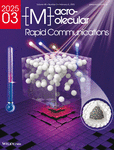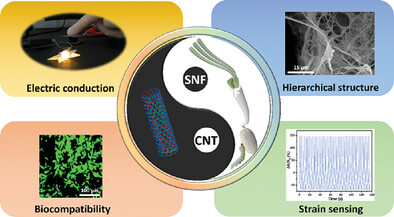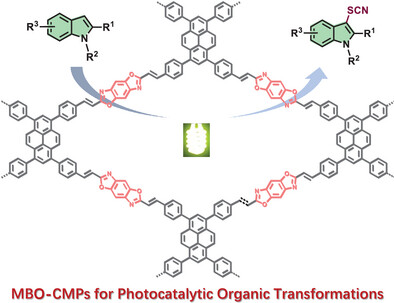Journal list menu
Export Citations
Download PDFs
Cover Picture
Enhancing Passive Radiative Cooling Films with Hollow Yttrium-Oxide Spheres Insights from FDTD Simulation
- First Published: 06 February 2025
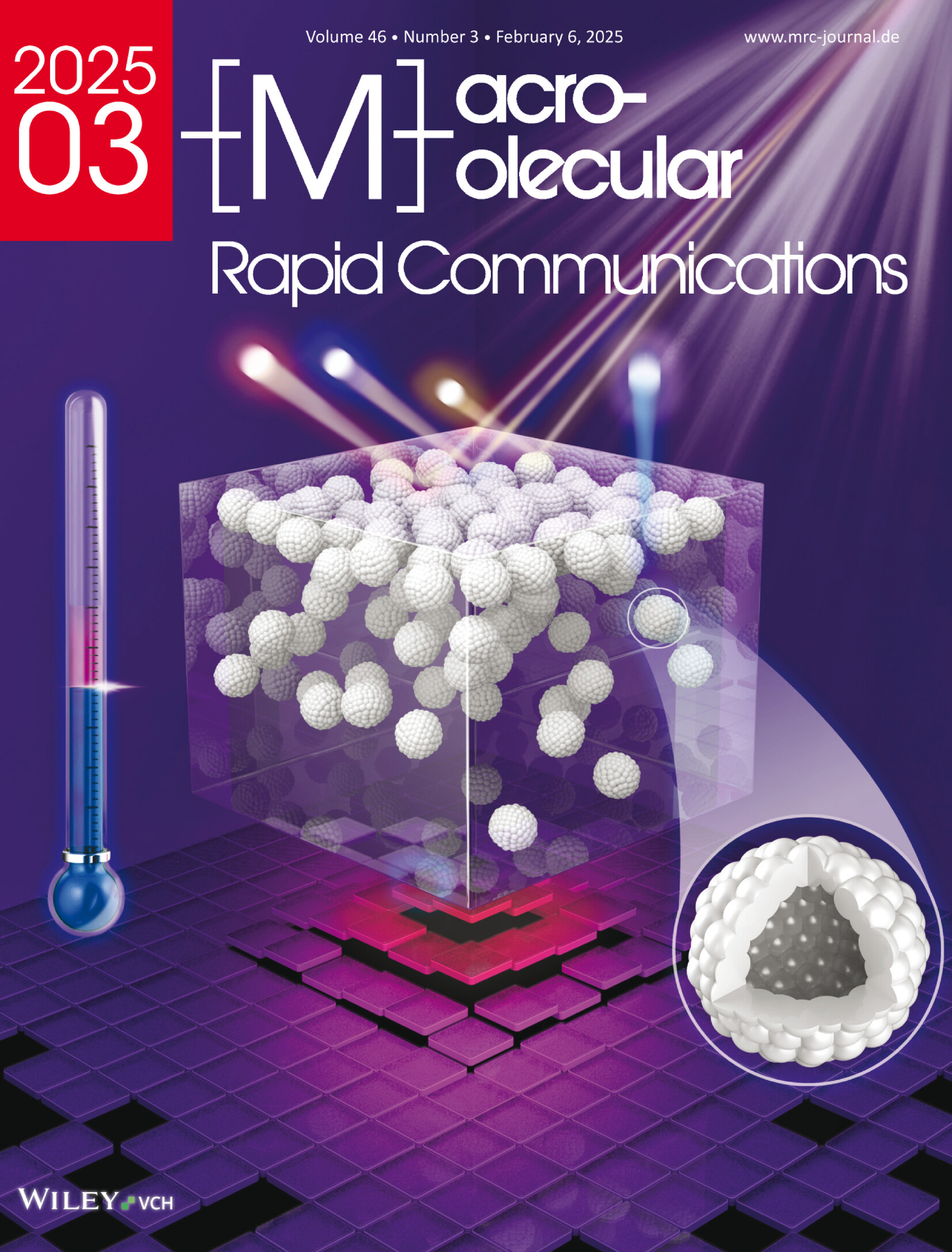
Front Cover: This cover image illustrates the integration of Hollow Yttrium-Oxide Spheres (HYSs) within a PDMS matrix, revealing their impact on passive radiative cooling. By embedding HYSs, the PDMS shows a notable increase in solar reflectivity and LWIR emissivity, effectively reducing solar heat gain while maximizing thermal radiation. Experimental validation and FDTD simulations confirm the optical benefits of HYS-infused PDMS, highlighting its viability for energy-efficient cooling. Our findings suggest that such composites are promising candidates for advanced passive cooling applications across diverse thermal management fields. More details can be found in article 2400770 by Yong Seok Kim, Youngjae Yoo, and co-workers.
Back Cover
Polymerization-Induced Self-Assembly for the Synthesis of Polyisoprene-Polystyrene Block and Random Copolymers: Towards High Molecular Weight and Conversion
- First Published: 06 February 2025
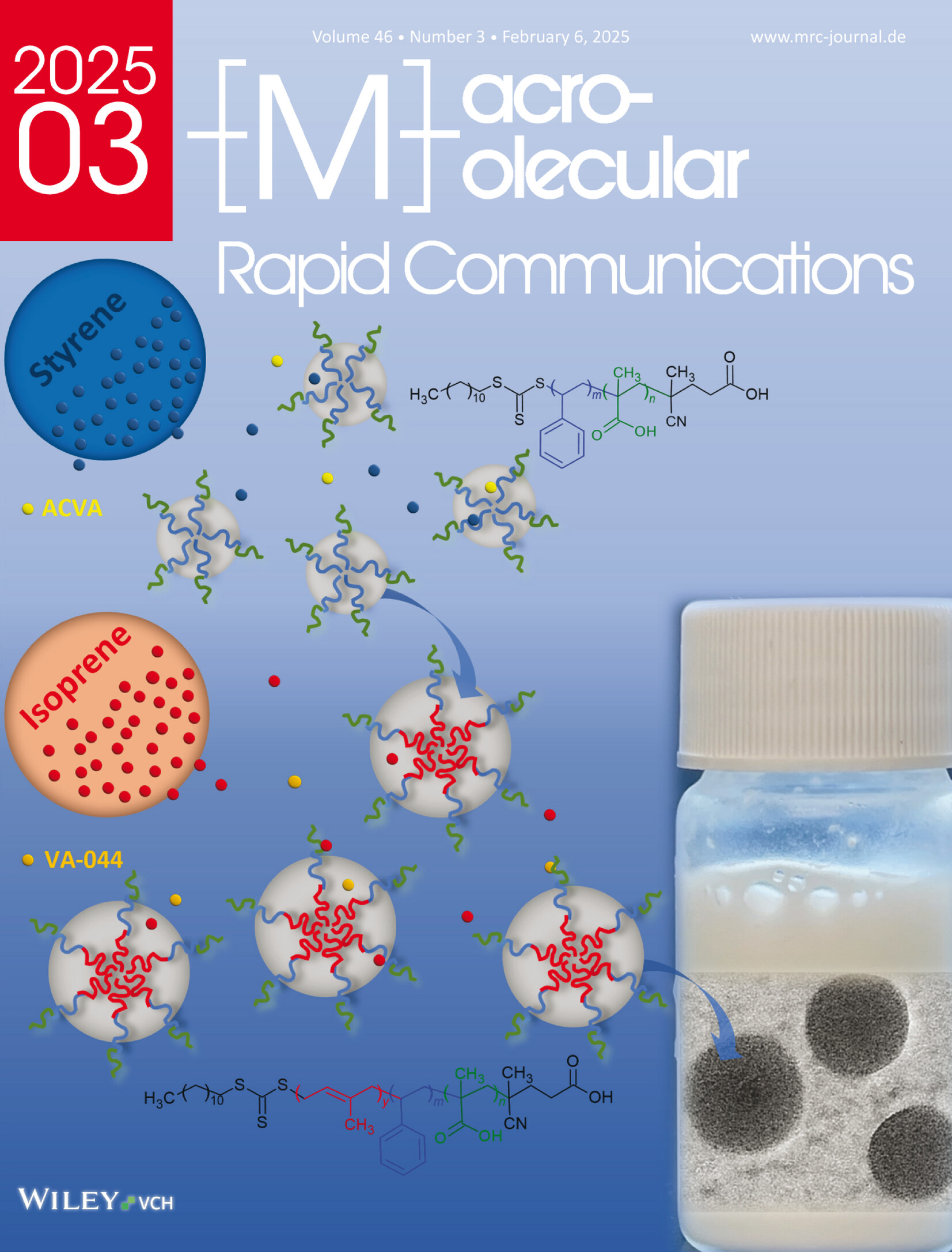
Back Cover: In article 2400727, Maryam Moradi and Prokopios Georgopanos present the synthesis of polyisoprene (PI) homopolymers, polyisoprene-polystyrene (PI-PS) block and random copolymers via RAFT-PISA polymerization in water. Using a poly(methacrylic acid) macroRAFT agent, PI and PI-PS copolymers with high monomer conversion are achieved. Thorough characterization indicated the successful synthesis, emphasizing PISA's scalability for producing tailored PI-PS copolymers with tailored-made molecular characteristics.
Issue Information
Issue Information: Macromol. Rapid Commun. 3/2025
- First Published: 06 February 2025
Research Article
Enhancing Passive Radiative Cooling Films with Hollow Yttrium-Oxide Spheres Insights from FDTD Simulation
- First Published: 30 October 2024
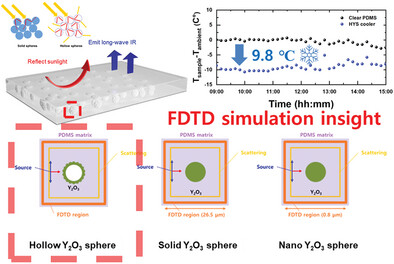
The figure showcases a daytime radiative cooling film that uses hollow yttrium oxide spheres within a polydimethylsiloxane matrix. This film reflects sunlight and emits long-wave infrared radiation, effectively cooling the surface under direct sunlight. FDTD simulations confirm the scattering efficiency of the hollow spheres, highlighting their role in enhancing the film's radiative properties. This technology offers a promising solution for energy-efficient thermal management.
Polymerization-Induced Self-Assembly for the Synthesis of Polyisoprene-Polystyrene Block and Random Copolymers: Towards High Molecular Weight and Conversion
- First Published: 26 October 2024
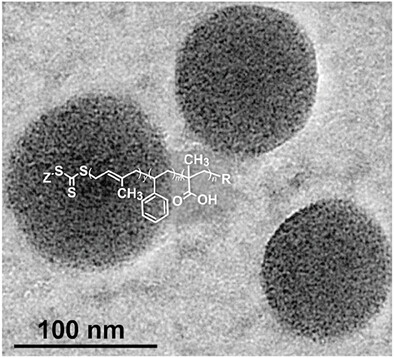
This study explores the synthesis of polyisoprene (PI) homopolymers, polyisoprene-polystyrene (PI-PS) block and random copolymers via RAFT-PISA polymerization in water. Using a poly(methacrylic acid) macroRAFT agent, PI and PI-PS copolymers with high monomer conversion are achieved. Thorough characterization indicated the successful synthesis, emphasizing PISA's scalability for producing tailored PI-PS copolymers.
Flexible and Compact PVDF/PMMA-Based Gel Polymer Electrolytes for High-Performance Sodium Metal Batteries
- First Published: 04 December 2024
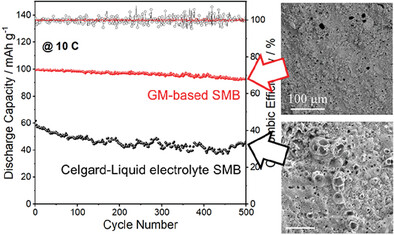
A compact and flexible GM is developed for SMB by gelating a cast PVDF/PMMA blend film with NaPF6 liquid electrolyte, demonstrating good ionic conductivity and high ion transference number, and enabling superior Na stripping-plating reversibility. The SMBs show impressive rate performance and great cyclic stability even at 10 C current, showcasing the dendrite suppression capability of the GM.
Xanthate Disulfide-Mediated RAFT Polymerization Toward Oxygen Tolerance
- First Published: 30 November 2024

In this contribution, the symmetrical diethyl xanthogen disulfide (XD) is successfully used as an initiator, chain transfer agent, and termination (iniferter) agent to directly regulate the open-to-air RAFT polymerization. The high end-group fidelity of polymer demonstrated by nuclear magnetic resonance (1H-NMR) and matrix-assisted laser desorption/ionization time-of-flight mass spectra indicates that sulfur-centered xanthate radical can initiate and regulate RAFT polymerization of methacrylate (MA) under open conditions. It is believed that sulfur-centered xanthate radical initiation strategy provides a powerful and minimalist tool for fully oxygen-tolerant RDRPs.
Rapid and Versatile Functionalization of Poly-Ethylene Imine via Dynamic Aminal Formation
- First Published: 04 December 2024
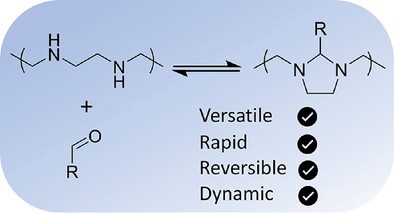
A reversible reaction between linear-polyethyleneimine and various aldehydes is reported. A variety of new polyaminals are prepared. The formation is a pH-dependent and reversible as aldehydes can undergo controlled release. The findings indicate that the dynamic aminal exchange reaction has great potential as a new methodology for constructing dynamic polymer networks.
Cyclooctyne End-Functionalized Poly(morpholine-2,5-dione)s
- First Published: 29 November 2024
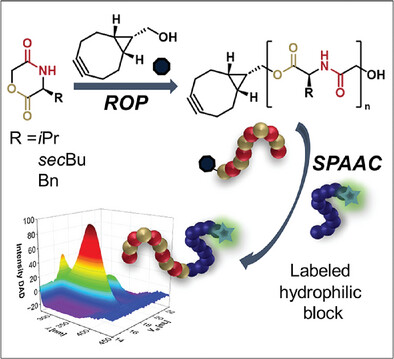
This is the first report of a successful initiation of the ring-opening polymerization of morpholine-2,5-diones based on l-valine, l-isoleucine, and l-phenylalanine using a cyclooctyne derivative as an initiator. The post-polymerization modification via strain-promoted azide-alkyne cycloaddition is demonstrated by coupling a poly(ester amide) with a hydrophilic and vitamin A end-functionalized “stealth” polymer.
Exploiting Seeded RAFT Polymerization for the Preparation of Graft Copolymer Nanoparticles
- First Published: 27 November 2024
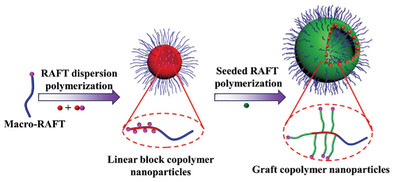
In this study, block copolymer nanoparticles embedded with different numbers of RAFT groups are prepared by RAFT dispersion polymerization of RAFT dispersion copolymerization of benzyl methacrylate (BzMA) and 2-(2-(n-butyltrithiocarbonate)propionate)ethyl methacrylate (BTPEMA). Using these nanoparticles as seeds, seeded RAFT polymerization is explored to prepare graft copolymer nanoparticles with different morphologies
α-Trifluoromethylated Quinolines as Safe and Storable PET-Donor for Radical Polymerizations.
- First Published: 05 November 2024
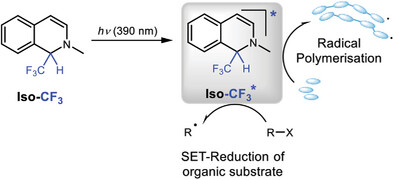
α-Trifluoromethylated quinolines are safe and storable photoinduced-electron transfer donors, efficiently used for the initiation of radical polymerizations or the reduction of halide derivatives. They operate both as the photosensitizer and the ET-donor, directly reducing the monomer without resorting to a second initiating component. The initiator can be stored in the monomer solution for several months without losing its efficiency.
Emissive Hydrazone-Linked Covalent Organic Frameworks as Highly Sensitive and Selective Sensor for the Hydrazine Detection
- First Published: 29 October 2024
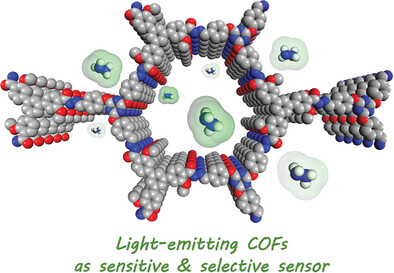
This study examines the synthesis of two emissive hydrazone-linked COFs as highly sensitive and selective platforms for hydrazine detection. Their design minimizes fluorescence quenching through partial conjugation and flexible structures, enhancing luminescence. The COFs with heteroatom abundance enable strong hydrazine interactions, offering exceptional selectivity and sensitivity, showing potential for applications in environmental monitoring and industrial safety.
Chiral Self-Assembly of a Pyrene-Appended Glutamylalanine Dipeptide and Its Charge Transfer Complex: Fabrication of Magneto-Responsive Hydrogels and Human Cell Imaging
- First Published: 15 November 2024

Glutamylalanine dipeptide appended pyrenyl moiety (Py-E-A) forms a robust, self-healing hydrogel by chiral self-organization. Imaging of normal human PBMCs was shown using Py-E-A fluorophore. Further Py-E-A donor and NDI-β-A acceptor in 1:1 stoichiometric ratio form charge transfer (CT) hydrogel. The CT hydrogel displays self-healing and injectable behaviors. Py-E-A and CT hydrogels loaded with spin-canted Zn-substituted CuFe2O4 nanoparticles show magneto-responsive properties.
Carbazole, Fluorene, and Silafluorene Bearing Non-Fullerene Acceptors: Synthesis, Characterization, and Performance in Organic Photovoltaic Devices
- First Published: 11 December 2024
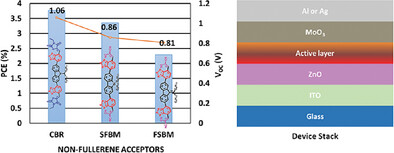
Three novel non-fullerene acceptors (NFAs), CBR, SFBM, and FSBM. The effect of the core variations on morphological structures, optical, electronic, and photovoltaic properties is investigated. The CBR molecule, with its nitrogen core, demonstrates better electron donation and morphology, achieving the highest power conversion efficiency (PCE) of 3.77%.
Thermal Treatment Induced Crystal Development and Crystal Orientation Change in Electrospun Coaxial Fibers Comprising Dual Crystalline Polymers
- First Published: 18 November 2024
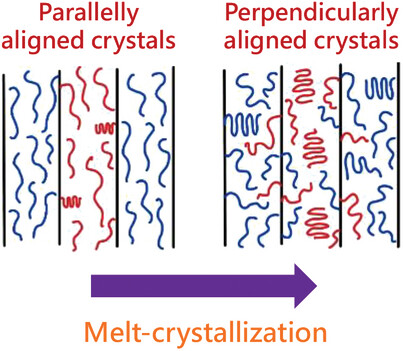
Core−sheath PEO−PLLA fibers are fabricated through coaxial electrospinning. Thermal treatment enhances the interdiffusion between PEO and PLLA, thereby inhibiting PEO crystallization. Additionally, thermal treatment relaxes stretched PEO chains, and a subsequent crystallization process results in an orientation change in PEO crystals. The melt crystallization also induces demixing between PEO and PLLA, which promotes crystal development.
Sonochemical Nitroxide-Mediated Polymerization: Harnessing Sonochemistry for Polymer Synthesis
- First Published: 13 November 2024
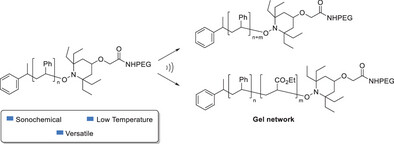
The study introduces sonochemical nitroxide-mediated-type polymerization process, employing alkoxyamine mechanophores for polymer synthesis. Polymerizations at reduced temperatures are demonstrated, exhibiting unique reaction kinetics. The polymerization of ethyl acrylate results in the formation of three-dimensional gel networks.
Stereoselectivity Control Interplay in Racemic Lactide Polymerization by Achiral Al-Salen Complexes
- First Published: 22 October 2024

The stereoselectivity control in the racemic lactide polymerization process, mediated by achiral Al-Salen complexes, has been rationalized using DFT calculations combined with activation strain model analysis and a steric molecular descriptor (%VBur). The primary features of both enantiomorphic site control and chain-end control mechanisms are elucidated to explain the formation of isotactic [PDLA-PLLA] stereoblocks.
Dynamic Micelle-Hydrogels for 3D-Architected Transition Metal Sulfides
- First Published: 14 October 2024
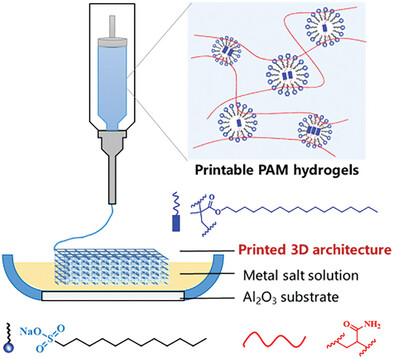
A general protocol for preparing diverse 3D-architected transition metal sulfides is developed using dynamic micellar hydrogels as the direct writing inks. Following freeze-drying and calcination, the 3D-structured hydrogels are successfully converted into transition metal sulfides, with the printed shapes being well maintained throughout the process.
Dual-Band Electrochromic Supercapacitor Utilizing Metal–Organic Coordination Polymer with Multi-Redox Feature
- First Published: 30 November 2024
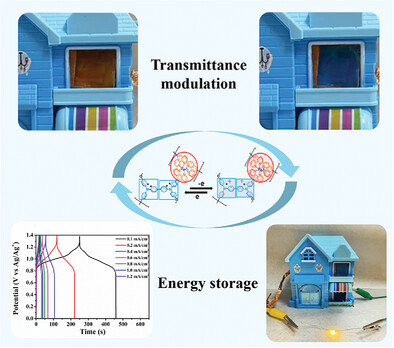
A novel metal–organic coordination polymer (DTPB-MCP) featuring multiple redox centers is successfully prepared. This mixed-valence system exhibits improved electrochromism and energy-storage performances compared with other similar materials. The electrochromic supercapacitor device by combining DTPB-MCP with V₂O₅ can be utilized as a smart window for regulating the solar radiation and reusing the electric energy.
Sequence-Controlled Copolymerization of Structurally Well-Defined Multinuclear Zinc Acrylate Complexes and Styrene
- First Published: 09 November 2024
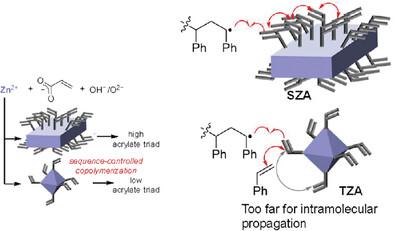
Sequence-controlled copolymerization of acrylate and styrene is achieved using readily accessible multinuclear zinc acrylate complexes as comonomers. A multinuclear zinc complex with densely arranged acrylate moieties affords a copolymer with more acrylate contiguous structures compared to the statistically random sequence, whereas a spherical zinc acrylate complex with separated acrylates affords a copolymer with many separate acrylate moieties.
Fully Conjugated Microporous Polymers as Metal-Free Heterogeneous Photocatalysts for Organic Transformations
- First Published: 22 November 2024
Enhanced Emission in Polyelectrolyte Assemblies for the Development of Artificial Light-Harvesting Systems and Color-Tunable LED Device
- First Published: 09 November 2024
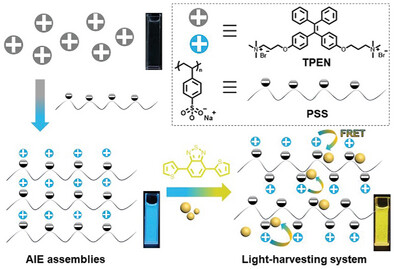
A tetraphenylethylene derivative, TPEN, is synthesized and co-assembled with poly(sodium 4-styrenesulfonate) to enhance its fluorescence via self-assembly. The resulting blue emissive assemblies are further used for constructing artificial light-harvesting system with yellow emission. Additionally, this system is successfully applied to prepare colour-tuneable light-emitting diode (LED) devices.




